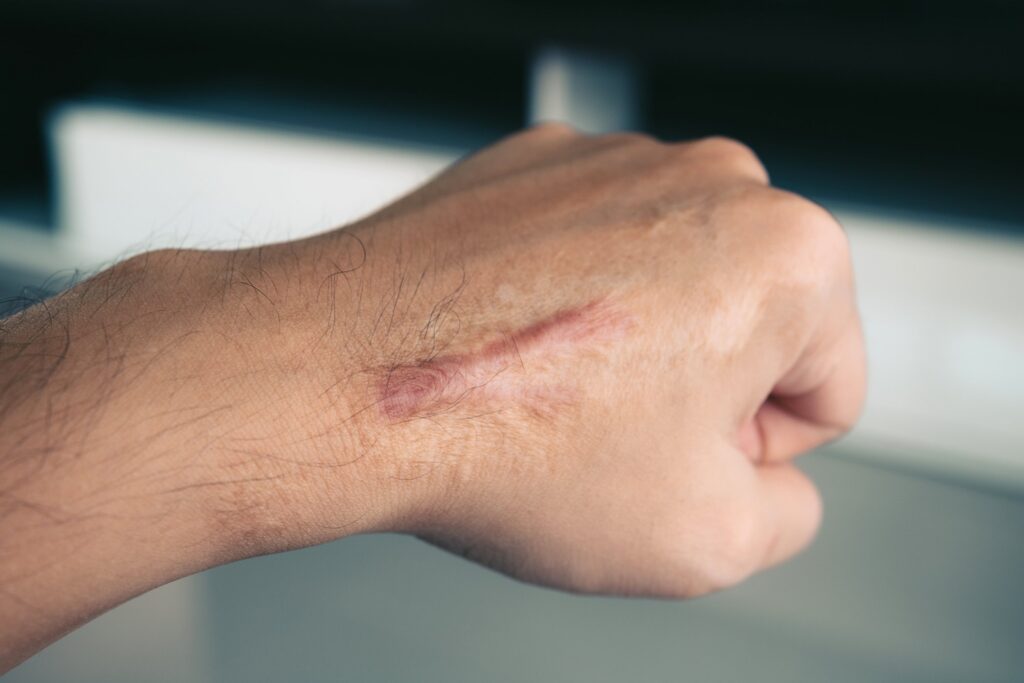Keloids and Hypertrophic Scars

When there is trauma or injury to the skin, by accident or any surgical procedure your skin tries to heal. Healing process takes place in the form of scarring. Our body tries to repair the damage by forming new collagen fibres and tissues in a haphazard manner that forms a scar.
A keloid scar is a firm, smooth, hard growth that develops as a result of excessive scar formation. They may develop on any part of the body and usually increases in size surpassing the original injury site although the upper chest, shoulders, ears, and neck are more prone to them.
Whereas, hypertrophic scars are limited to the area of the injury. Hypertrophic scars develop as a result of stress on the healing wound. These scars are thick and subside on its own as compared to other keloids.
Clinical features of Keloids
- Firm, smooth, raised lump
- Red or purple at first, later turns brown and pale.
- They grow beyond the original site of damaged skin
- May get uncomfortable and itchy
- It can develop years after the injury
Clinical features of Hypertrophic Scars
- Slightly raised or flat
- Pink to red in colour
- They usually develop within weeks of injury
- Remains confined to the area of injury
Adverse effects
- Cosmetic malformation
- Psychologically and socially it can be embarrassing
- Can limit the range of movement
Treatment
- Intralesional steroid injections are given into the scars.
- Applying silicone gel sheets on to the scars for long time is advised.
- Use of steroid ointments for the scars can be prescribed.
- Surgical excision may be done in extreme cases.
- Botulinum injections can be injected into the scars.
Book Appointments
Address:
1st floor,Flat No 11, Disha Apartment, PARIHAR chowk, above GoColors and Saalim Salon, opp. Bajaj finance, Sanghvi Nagar, Ward No. 8, Aundh Gaon, Aundh, Pune, Maharashtra 411007
Email:
pureskinhairlaser@gmail.com
Phone:
095183 80486
